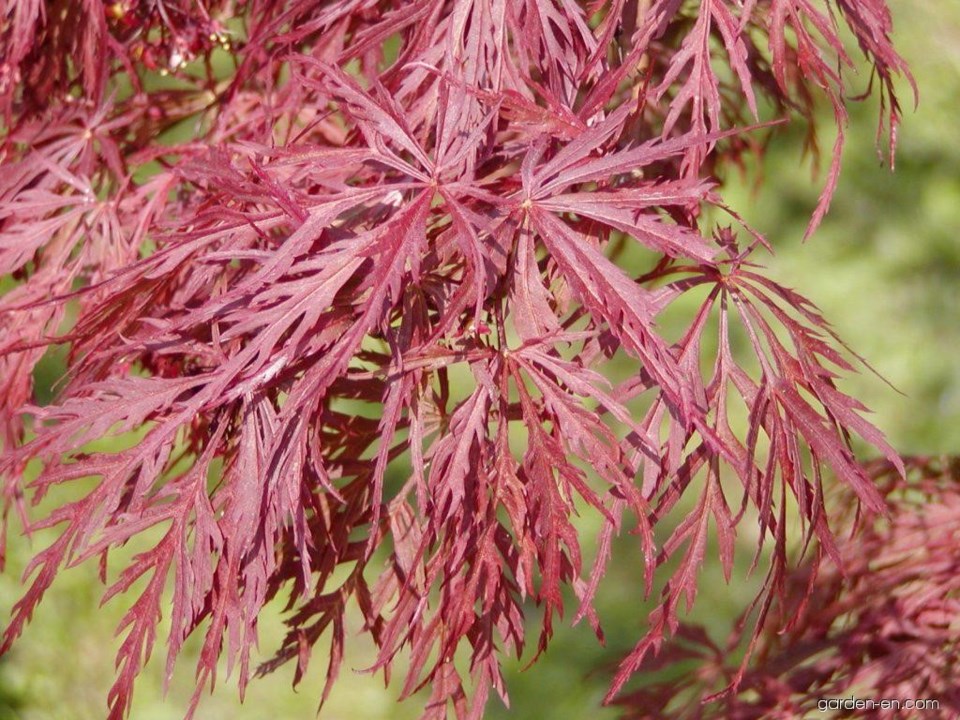Last week we focused on some of the wonderful trees and shrubs in the Maple Family. Read on for more great maples you can grow!
One of the nicest maples to grow is the Amur Maple (Acer ginnala). It is a tree of smaller stature and only grows to about 18' (5.4 metres) high and is multi-stemmed with a nice rounded form. Amur Maple is an introduced species from Asia that was first grown in the 1930s in North America. It is best planted in full sun and is graced with red samara (seed structure). This is a great tree that is truly beautiful that is perfect for smaller landscapes.
The Tartarian Maple (Acer tartaricaum) is a close relative to the Amur Maple but is slightly taller and has a wider, rounder canopy making it a great shade tree for smaller landscapes. Hence they are about 20 feet (6 metres) tall and can be 25 feet wide (7.6 metres). Both the Tartarian and Amur Maple have wonderful fall colours when the weather permits and showy samaras (seeds). Hot Wings® Tartarian Maple (Acer tartaricum ‘Garann’) is an amazing small maple to grow. In 1993, it was discovered in Fort Collins Wholesale Nursery as a tree that stood out more than all the others on site. The tree demonstrated breathtaking beauty for six weeks each summer with scarlet red samaras that contrast beautifully with the rich green foliage appearing like the tree is in bloom. It also has strong branch unions so is less prone to limb breakage in windy areas. It also has great fall colours ranging from a deep orange-red on the outside and more yellow on the inside of the canopy.
The Silver Maple (Acer saccharinum) is the only maple which is not susceptible to aphids and thus for that reason alone is a good choice for our landscapes. It is a large tree with an oval crown and is also quite fast-growing.
The striped maple (Acer pensylvanicum) is an understory tree which is distinct because of its green and white striped bark that allows the tree to photosynthesize better in the shade and even before the leaves appear in spring. It also has a common name of moosewood as both moose and deer like to browse the twigs in winter. The autumn colour is yellow.
The Norway maple (Acer platanoides) was introduced from Eurasia in the mid-1700s as an ornamental tree. You will find it in southern British Columbia and from southern Ontario to Newfoundland. It is considered a threat to other maples as it leafs out earlier, retains its leaves for longer and has very prolific seed production and germination. It grows in dense stands and the leaves release toxins that will affect the soil fungi and microbes and easily out-competes with trees like the sugar maple and red oak.
The Japanese Maple is not only a beautiful landscape tree, but for those of us who are living in more severe climates, it is an option for an indoor/outdoor environment. One of the classic Japanese Maples has deeply cut, feathery red-purple leaves that turn a brighter crimson in fall. Acer palmatum 'Dissectum Atropureum' or Lace Leaf Japanese Maple is a great selection for your backyard in the summer and the solarium in the winter. There are a host of different Japanese Maples that you may try and for sure they will each bring much to your landscape.
Hanbidge is the Lead Horticulturist with Orchid Horticulture. Find us at ; by email at [email protected]; on Facebook @orchidhort and Instagram at #orchidhort. Tune into GROW Live on our Facebook page or check out the Youtube channel GROW




